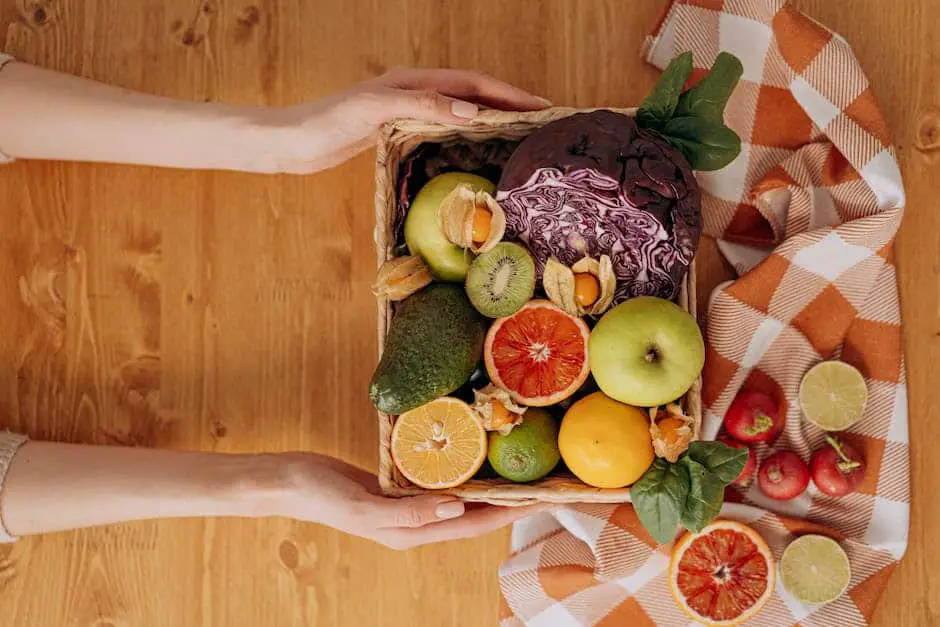

The intricate and captivating tradition of basket weaving has been entwined in our human history for centuries, serving as a testament to our creative and practical capabilities. Originating from diverse cultures across the globe, this craft has evolved and grown in parallel with civilization itself. Learn to weave a basket like a pro.
Weaving a basket involves interlacing flexible materials, like reeds or twigs, to form a container. Techniques include creating a base, building up the sides, and finishing with a rim. Baskets serve utilitarian and artistic purposes in various cultures and crafts.
This fascinating journey of transformation is embedded in the patterns, processes, and purposes of each woven masterpiece. From the selection of the right materials and tools to understanding fundamental weaving techniques, and creating splendid designs to avoiding and correcting common mistakes, this guide provides an enriching, comprehensive insight into the world of basket weaving.

History Of Basket Weaving
Ancient Roots: Basket Weaving Across Cultures And Civilizations
Basket weaving, as an ancient craft, finds its roots in a diverse range of cultures and civilizations across the globe. Far from being a homogenous craft, it has taken various forms influenced by the indigenous materials, customs, and needs of the region. From bamboo baskets in Asia to the reed baskets of the Egyptians, the diversity within this art form is immense.
The Evolution Of Basket Weaving: From Functional To Decorative
As centuries passed, the art of basket weaving evolved drastically from being purely functional to being a combination of the practical and decorative. For example, the Nantucket Lightship Baskets characteristic of the Massachusetts island started life as utilitarian objects among the island’s lightship keepers. However, as more artists took up the craft, the baskets evolved to become antiques and collector’s items appreciated for their intricate design and craftsmanship.
Modern Techniques: The Influence Of Change
Modern basket weaving techniques are a broad mix of ancient customs and contemporary experimentation. Even though the basics of the craft remain the same— interlacing strands of flexible materials like vinework, grass, willow, bamboo or plastic mesh—many basket weavers today utilize synthetic materials to create original and innovative designs.
Moreover, the shift towards sustainable and eco-friendly alternatives has driven a revitalization of basket weaving with natural fibers, giving this ancient craft a relevant and eco-conscious place in the modern world.
Basket Weaving: PreserviAnd Propagating An Ancient Art
Despite rapid modernization and industrialized production methods, the art of basket weaving has managed to retain its charm and importance. Today, various basket-weaving workshops, preservation societies, and museums around the world keep the age-old craft alive.
Not only does basket weaving offer the hands-on experience of enduring folk art, but it also connects people to their roots, reflecting a larger human story about our relationship with the earth, its resources, and each other. The continuous evolution and adaptation of this craft is a testament to the creativity and resilience of humanity. It’s an empowering art form that teaches patience, and mindfulness and helps to build a sense of community among its practitioners.
Basket weaving, an art that beautifully blends ancient wisdom with modern aesthetics, continues to evolve and captivate enthusiasts. Irrespective of the strides made in modernity, its practicality and aesthetic charm ensure that it will remain treasured, with ample scope for enhancement and diversification in times to come.
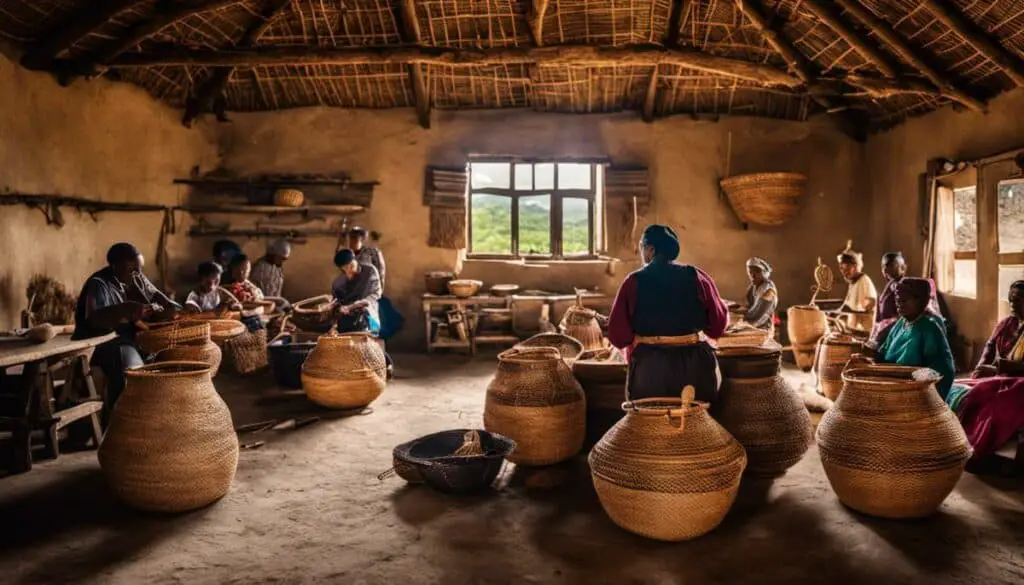

Materials And Tools For Basket Weaving
Necessities For Basket Weaving: A Look At Vital Materials And Tools
Enriching and adaptable, basket weaving calls for certain essential resources. These include materials such as willows and reeds, and tools like needles and scissors.
Willows
Willow rods are a traditional choice, well known for their flexibility and strength. They are best harvested during winter when the sap is down in order to allow for optimal bending without breakage. Once harvested, willows can be dried for year-round use. When you’re ready to weave, soaking them in water will restore their flexibility. Numerous online sites and local nurseries offer various types of weaving willow.
Reeds
Reeds are another basic material used in basket weaving for their ability to retain flexibility when wet. Reeds come in several varieties, divided into flat reeds and round reeds. Flat reeds are more suited to certain basket styles, while round reed is better for others. Flat reed is wider and thinner, often used for basket bases and wide weave designs. Round reed is used for trim or rims, or more intricate designs. Reeds are available in craft stores and several online retailers in various sizes and bundles.
Needles
Needles for basket weaving are distinct from standard sewing needles. These needles, often called basketry needles, have a large eye for threading thicker materials and a blunt end to avoid damaging the basket material or the weaver’s fingers. They’re used for intricate designs often found in cane or coiling techniques. Many craft stores supply them, and there are numerous online sources too
Scissors
A pair of durable, sharp scissors is critical for basket weaving. Using a good pair can make it easier to cut through hardened reeds or trim excess material from your completed basket. Quality scissors will provide the best results, ensuring clean cuts and extending the life of your basket. Craft stores or online retailers should have a selection of acceptable scissors, along with reviews to guide your purchase.
Starting Point Recommendations For Beginners
If you’re just stepping into the intricate world of basket weaving, it’s advisable to kick off with common materials such as a simple flat reed and round reed. These materials lay a good foundation for understanding the fundamental principles of weaving, minus any complex techniques. Additionally, for added convenience and to curtail the need for any initial investment in tools, consider using pre-cut reeds.
To jumpstart your weaving journey with ease, consider getting a beginner’s kit, which is available on various online platforms as well as local craft stores. These kits are all-inclusive, offering all the necessary materials required for a beginner project, and often, include a set of instructions to guide you conveniently through your initial crafting experience. Progression into more intricate materials and designs such as willows or using basketry needles is a thrilling facet of basket weaving that can be explored as you advance in proficiency and interest.
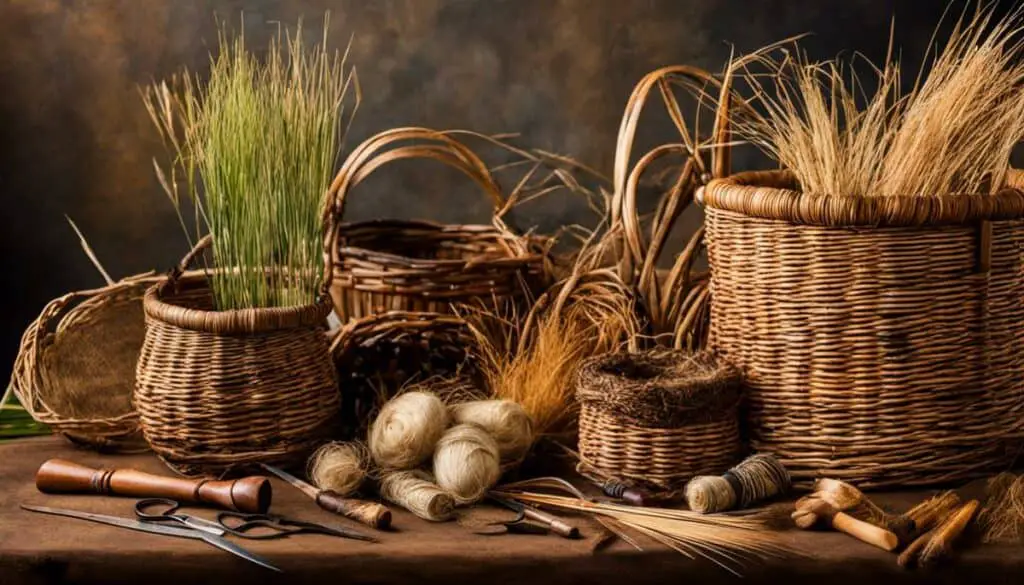

Fundamental Weaving Techniques
Fundamental Insights Into Basket Weaving
Basket weaving is an age-old craft defined by the techniques of wrapping, sewing, and folding malleable materials like straw or cane into artistic, practical shapes. This craft essentially revolves around three primary weaving techniques, namely: plain weave, twining, and coiling.
The Plain Weave Technique
The plain weave, often seen as the simplest form of basket making, consists of weaving together two sets of materials at right angles. The vertical set is considered “warp,” while the horizontal set is the “weft.” This technique ensures efficient usage of material and makes the final product more substantial and stable. Traditionally, artisans use willow or rush straw to perform this style, but with the flexibility it offers, many materials like yarn, paper, or other fibers can be used.
The Technique Of Twining
Twining is another fundamental technique in basket weaving wherein two elements pass alternatively over and under the warps. It must be noted that both ends of a twined strand start at the same place, wrapping around a single warp before continuing. This method offers more rigidity to the overall structure, which is why it is often used at the start or finish of a basket. Twining is typically employed with materials such as long pine needles or grasses.
Coiling Technique In Basket Weaving
Coiling, one of the oldest basket-weaving methods, is a technique where one reed or bundle of grass is wound around another, maintaining a spiral pattern. The coils can be round or oval-shaped, depending on the desired finished product. This method is time-consuming and intricate as it requires strong precision and accuracy. Materials commonly used for coiling include pine needles, raffia, rushes, or even yarn.
Visual Elements For Learning Basket Weaving
In addition to simple text instructions, various other resources could assist with learning and mastering weaving techniques. Infographics provide a clear visual representation of the technique, breaking down each step and making it easy to understand. These visual elements can be instrumental in picturing the process, providing the learner with a clear roadmap.
Videos, on the other hand, offer a hands-on learning approach, allowing learners to follow along with each step. These tools demonstrate the basket weaving process in real time, providing direct, practical instruction. Video tutorials, webinars, animation, or other types of visual content can be particularly beneficial for tactile learners.
Mastering The Basics Of Basket Weaving
Basket weaving is an art that requires patience and dedication. For beginners, it’s important to start with the simplest of techniques – the plain weave – before advancing to more complex forms such as the twining and coiling methods. This sequential learning aids in gradually building confidence and expertise.
Keep in mind that acquiring proficiency in basket weaving doesn’t happen overnight. Instead, it requires consistent practice and quality instruction. However, with sufficient perseverance, anyone can indeed master this intricate and engaging craft.
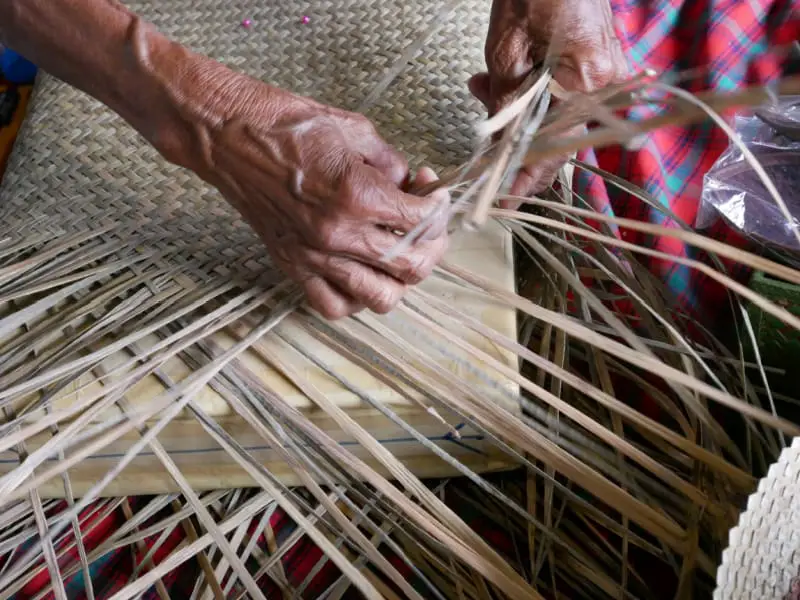

Basket Weaving Patterns And Designs
Exploring Various Patterns In Basket Weaving
The realm of basket weaving is all about intertwining flexible materials to create objects that are not just functional but also hold aesthetic appeal. There are numerous patterns that can be made in the process. Among the vast array, the most prevalent are the plain weave, twill weave, and coiling.
The Plain Weave
The plain weave, also termed an “over and under” pattern, is simple yet elegant and perfect for beginners. It involves weaving the weft (horizontal elements) over and under the warp (vertical elements), creating a checkerboard pattern. This pattern serves as a great starting point for any novice weaver.
The Twill Weave
The twill weave, on the other hand, is a step beyond the plain weave. It involves interlacing the weft thread over two or more warp threads, and then under one or more warp threads. This results in a diagonal pattern, bringing a distinct design to the basket. Due to its complexity, the twill weave may be favored by intermediate to advanced weavers.
Coiling Technique
Lastly, coiling is a technique where one material is wrapped around another in an ascending spiral. The result is a sturdy, round basket, often with a visually striking texture. This technique requires patience and precision, especially in maintaining consistent tension throughout the material.
Creativity With Basket Designs
In addition to the traditional patterns, creativity plays a significant role in developing unique basket designs. These include the incorporation of color in basket weaves, embellishing with beads or shells, as well as experimenting with different weaving materials.
Incorporating Color
Color can be incorporated into basket designs in numerous ways — by dyeing the weaving materials beforehand, using different colored materials, or applying dye after the basket is woven. The use of color can bring out distinct patterns, visual depth, and personal style.
Adding Embellishments
Adding embellishments such as beads, shells, feathers or even leather can contribute an added touch of elegance or whimsical charm to the basket. These can be strategically placed to accentuate the basket’s pattern or be incorporated throughout the design.
Experimenting With Weaving Materials
Experimenting with different weaving materials like willow, sweetgrass, or other natural fibers allows for greater flexibility and diversity in basket designs. These unique materials often influence the texture, shape, and final look of the basket.
Basket Weaving Techniques
Basket weaving techniques can vary depending on the design and purpose of the basket. The rim or edge of the basket can be finished in a number of ways such as a simple wrap, a braid, or even a twisted and tuck method. Creating handles or lids may involve specific techniques like the crown knot or a chase weave.
Experimental Techniques
Experimental techniques such as ‘double wall’ weaving or ‘random weave’ offer an entirely unique and often organic design, where the materials define the form. With practice, these techniques can unlock and expand the creative potential of basket weaving.
Unraveling The Art Of Basket Weaving
Basket weaving is an enriching craft, stretching back to ancient times and persisting today through the evolution of unique and innovative designs. This timeless skill presents an infinite scope for artistic exploration and self-expression.
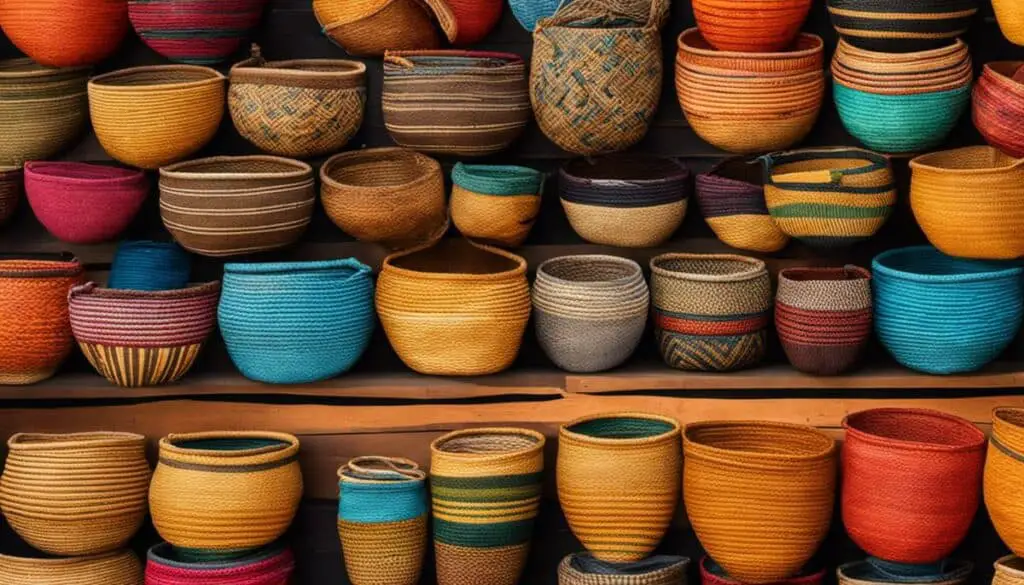

Common Basket Weaving Mistakes And How To Avoid Them
Navigating Challenges In Basket Weaving
As newcomers delve into the craft, maintaining consistent tension can be quite challenging. Overly restrictive or lax weaving methods can lead to a distorted or unstable basket form. If you notice your basket tightening excessively, relax your grip to rectify this. Conversely, if it’s too loose, pull the weft a little tighter for a more secure construction.
The art of selecting the right materials often trips up beginners too. Many inadvertently choose materials that are either too brittle, leading to broken baskets, or excessively flexible, yielding shapeless forms. The ideal material should strike a fine equilibrium between sturdy and pliable. If you’ve already made an error in material selection, don’t fret. Overly stiff materials can be dampened for increased flexibility, while extremely supple materials can be reinforced with more rigid ones for stability.
Crossing Stakes Incorrectly
Crossing stakes incorrectly is another common error. If stakes aren’t crossed correctly, the structural integrity of the basket can be compromised. A useful trick to ensuring correct stake crossing is to initially lay out the stakes on a flat surface and follow a weaving guide to ensure they intersect properly. If found early enough, relay the intersection of the stakes according to the recommended patterns of your chosen basket design.
Mistaking Warp For Weft
Newbies often mistake warp for weft, a mix-up that can lead to poor basket structure. Make sure you understand the difference: the warp is the stiff, vertical element to which something else is affixed, while the weft refers to the more flexible, horizontal strands that you weave in and out of the warp. If you’ve made this common mistake, it’s best to undo the weaving and start from scratch, paying close attention to correctly setting up the warp and weaving the weft.
Finalizing Prematurely
Finalizing a weave too soon is another common mistake. One of the signs that you’re rushing the process is the top of the basket closing too early, leading to a narrow opening. To avoid this mistake, it’s advisable to gradually reduce the size of the weave as you ascend the basket. If your basket seems to be closing in prematurely, you may have to unwind the top part and weave it more loosely.
In summary, closely adhere to instructor guidance, seek advice as needed, and practice frequently. Basket weaving is an art that requires patience and keen attention to detail. By understanding the common mistakes basket weaving beginners make, you can better anticipate and avoid them, leading to a more enjoyable weaving experience.
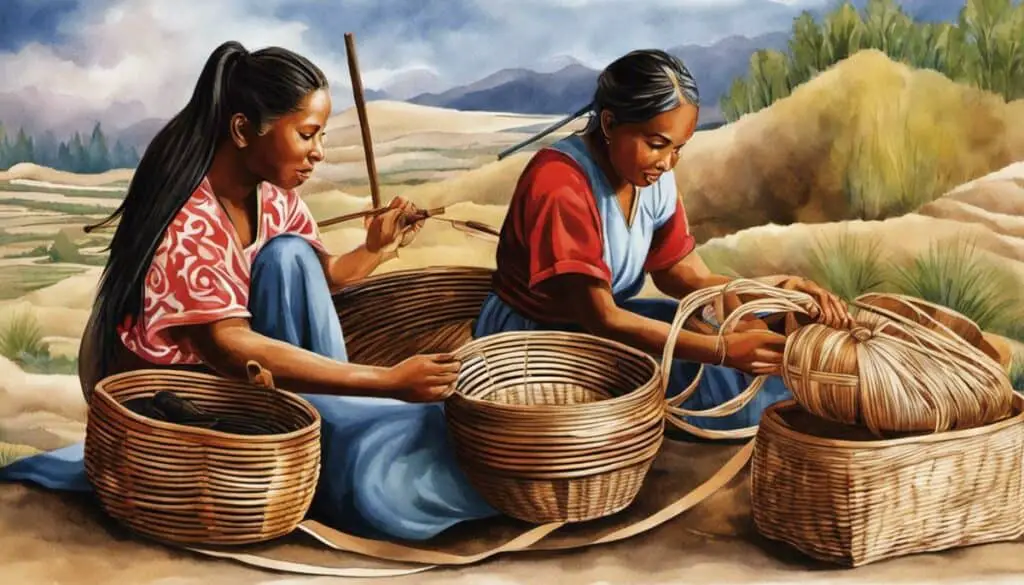

Despite the many complexities and challenges that come with the art of basket weaving, it remains an incredibly rewarding, multifaceted craft that links us to our ancient roots and unlocks our creativity. The emergence of new patterns, techniques, and fixtures adds to the existing tapestry, keeping it alive and constantly evolving.
With knowledge of the foundational principles, the right materials, and a reservoir of tips and tricks at your disposal, you’re well-equipped to embark on your own basket-weaving journey. The world of weaving awaits your unique patterns and designs, ready to become a part of this timeless, dynamic narrative.
I hope this post brought value to your day. Please consider sharing it with a friend or on your favorite social media if it did. Thanks For Reading The Dying Art Of Living!

